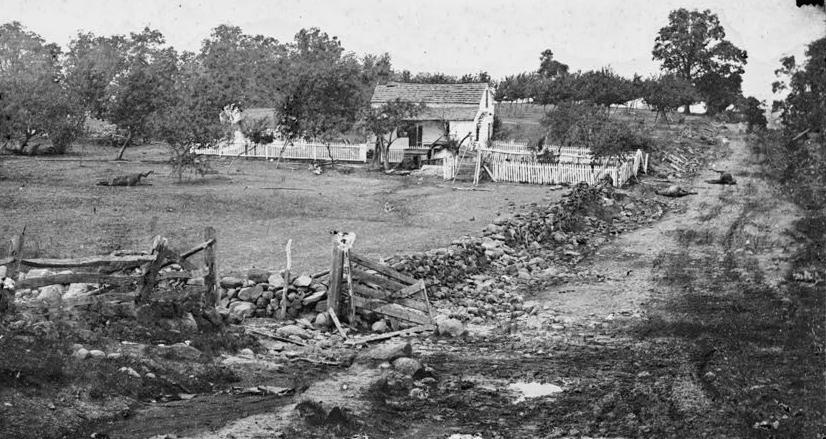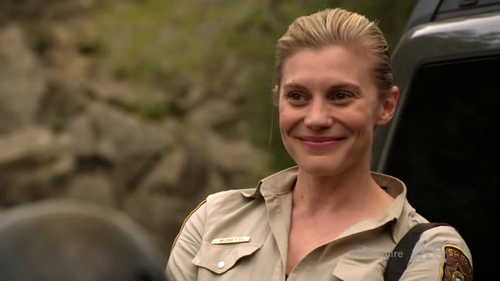Allen C. Guelzo’s Gettysburg: The Last Invasion
The great Civil War historian, David Blight, reviews the book for the NY Times.
General Meade's Headquarters, Gettysburg
Guelzo tells us these German-Pennsylvanian solid rail fences and rock walls baffled Lee and his men - so unlike the zig-zag worm fences and drystone walls of Virginia
Blight praises the book, including the following, which was also emphasized by Ernest B. Furgurson in his Washington Post review. Their shared emphasis on the divisions among the Army of Northern Virginia was of particular interest to me, as one of the themes of The American Slave Coast is Virginia's sense of its pre-eminence, not just among the southern states, or the CSA, but from the colonial era and into the national eras (five of the first presidents were Virginians), its rivalry with South Carolina, its sense of "we haz been robbed!" that endures into this very day, if it isn't given pride of first place:
Amid the numbing detail about generals’ personalities, Guelzo provides some beguiling accounts of the political divisions and rivalries between the officers of the two armies. Both staffs were divided houses, with Lee’s corps commanders as well as line officers largely split between Virginians and non-Virginians and between those who had embraced secession and those who had not. The Union Army’s officer corps exhibited even more conflict between the “McClellanites,” Democrats devoted to the discredited and fired George B. McClellan, who sought a limited war that would never threaten the racial order, and those Republicans of a New England antislavery stripe who really did believe the war must destroy slavery.Blight however, finds faults with other matters in Guelzo's book, that were not mentioned in the Washington Post's review. Such as:
This book’s considerable achievements, though, are marred by Guelzo’s literary style, as well as by his apparently irresistible romantic urge to add one more panegyric to the epic of Gettysburg. His claim that military historians have to struggle for respect among the “Civil War’s cultured despisers,” that a book like his violates “fashion” because it is not about the “agency” of black emancipation, seems unnecessary at best. (He and I have differed on this point before.) And the gems of detail from Guelzo’s keen researcher’s eye (he tells, for example, of a Roman Catholic priest standing on a rock offering absolution to the silent soldiers as they file into battle, bands playing to raise morale during combat, a Confederate general desperately breaking his sword on the ground as he surrenders) often pale next to the array of recorded descriptions of how soldiers were shot, where bullets penetrated their bodies or those of their horses — “through the left lung,” “entered the left side of the stomach, perforating his sword belt and lodging in the spine” and the like. Such passages seem awkwardly clinical when overused, even if garnered from a soldier’s remembrance.
There are other problems with Guelzo’s language as well. What does it mean for a full division of infantry to get a “collective bloody nose,” or a brigade to have its flank “slapped.” After portraying such “sheer carnage,” why term this deadly affair a “gigantic boxing tournament gone wildly into three-digit extra rounds?” The historian John Keegan* calls this kind of rhetoric the “Zap-Blatt-Banzai-Gott im Himmel-Bayonet in the Guts” style of military history." ....In the meantime I'm reading a biography of John Hay, Lincoln's younger private secretary (he was historian Henry Adams's best friend, as well as holding among other posts, that of Secretary of State for Theodore Roosevelt, about whom, as with Lincoln, Hay wrote first hand accounts). I've reached the point where Hay's at Gettysburg with Lincoln, on the occasion of the Address. Hay's personal experience of that Gettysburg occasion is interesting, because it's unlike others I've read. He was a (very) young man then, with a young man's sensibilities. He got whisky drunk with chums, played poker until the wee hours the night before, was sleep deprived and hungover when Lincoln spoke. Nevertheless he did witness and remember Lincoln working up the Address.
-------
* John Keegan revealed himself sorely lacking in knowledge of our Civil War's history in his own The American Civil War: A Military History. I haven't read an English historian or historical novelist who has truly understood our Civil War. (This isn't to say there are none, but that I haven't encountered them.) The studies tend to focus on the battles, and ignore the process of the long run-up to the war -- even the most foundational, which is why this war happened, and why the Union went to war, which was not only to preserve the nation, but preserve itself from having slavery forced upon it. The Slave Power's entire objective for the war was to expand its dominance throughout the continent and the hemisphere.
IOW, the Slave Power could not be contained, for it would not be contained. Capitalist to its core, its entire economy surviving within the bubble and burst of the ever more manic interstate slave trade, it had to forever expand territory -- or pop forever. Which, with Emancipation, the Slave Power's economy did burst, never to return to the base of that economy, the enslaved womb, whose increase was their interest, which allowed for slavery and that economy into perpetuity.
The Slave Power's economy was a credit economy, based on the ownership and trade in slaves. They were its credit and payment. Working them out at hire, and selling them for a trader's promised cash, provided many a southerner with the only cash they ever handled. The South had no specie, not even a currency, beyond the credit that owning a slave provided. It didn't even have the greatly lucrative Cotton Kingdom carrying trade to England's textile industry, for it didn't bother to build or support any kind of merchant marine. That carrying trade was New York's -- as were the granters of credit, etc. For all the supplies and goods of anything the South might want, or need -- including the food and clothing, such as they were, for the slaves, was manufactured by, and bought from, the north.


























